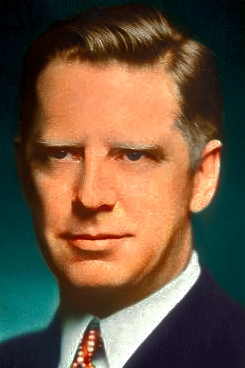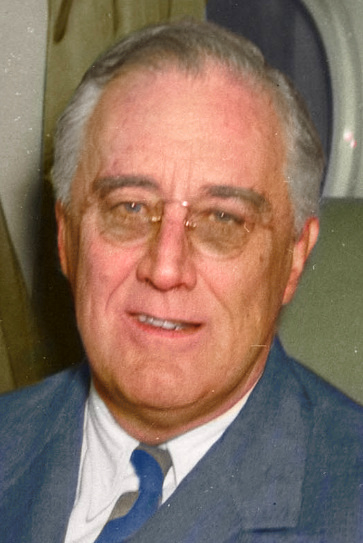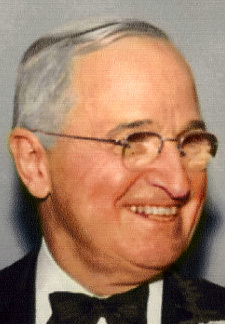
Roosevelt speech broadcast from West Coast naval base
President crosses nation leisurely in special train; stops at Hyde Park and Chicago
By Merriman Smith, United Press staff writer
With President Roosevelt at a Pacific Coast naval base –
President Franklin D. Roosevelt began his formal fourth-term campaign here last night in the heavily armed might of this Navy base in a manner that underlined his plans to seek reelection as a wartime Commander-in-Chief.
Mr. Roosevelt came cross-country by train, traveling in strictest wartime secrecy and broadcasting his acceptance speech to the Chicago Democratic Convention from his special train. He was surrounded only by his top military and naval commanders and, aside from a special train, his leisurely transcontinental trip had none of the usual campaign year trappings.
Wartime security regulations prevent exact description of the President’s whereabouts, but he explained to the convention and a nationwide radio audience in his address that he was at a West Coast naval base “in the performance of my duties under the Constitution.”
His broadcast was made tonight from a spacious railroad car. The President’s microphones were placed on a small table at one end of the car. When he finished his speech, he ran through the highlight passages again for newsreel cameramen.
Because of the secrecy surrounding the trip cross-country, there were no crowds at waystations except a few railroad people.
Members of the President’s party included his wife, Adm. William D. Leahy (chief of staff to the Commander-in-Chief), VAdm. Ross T. McIntire (Mr. Roosevelt’s physician and Surgeon General of the Navy), Maj, Gen, Edwin M. Warson (secretary and military aide), RAdm. Wilson Brown (naval aide), Judge Samuel I. Rosenman (counsel to the President), Elmer Davis (Director of the Office of War Information), and Miss Grace Tully (the President’s private secretary).
White House correspondents for the United Press, Associated Press and International News Service were also with the President.
Fala is a giveaway
As in previous secret wartime trips, Fala, the President’s Scottie, was a dead giveaway. People staring at the train during service stops got the idea quickly when they saw Fala trotting up and down beside the train. At the stop in Chicago, a railroad yard worker said to a member of the President’s party, “If I’m getting nosey, tell me, but isn’t that Fala?” The word spread quickly that Mr. Roosevelt was aboard.
As an added precaution against premature disclosure of the President’s whereabouts, the name of the railroad company was painted off the cars. This is because the train consisted of Baltimore & Ohio equipment and it would have seemed strange to see a B&O train on the West Coast.
It required 30 tons of ice every 24 hours to operate the air conditioning system on the presidential train.
Stops at Chicago
Mr. Roosevelt left Washington July 13 and swung through 16 states at a loafing 30-mile clip, resting and handling a lot of paperwork, including the composition of his address. During the trip he made two major stops – one on July 14 for nine hours at his Hyde Park, New York, home and again in Chicago on July 15 for a few minutes when he saw Robert E. Hannegan, National Democratic Chairman.
While traveling, Mr. Roosevelt remained in constant touch with Washington and probably Mr. Hannegan, too. Special telephones were put aboard his car several times a day.
The President’s activity at this base, aside from working on his speech, included few official engagements. One was inspection of training activities in the vicinity. Mr. Roosevelt arrived here before dawn on July 19 and a cordon of sentries quickly took up positions around the train. Otherwise, there was little to indicate his presence.



